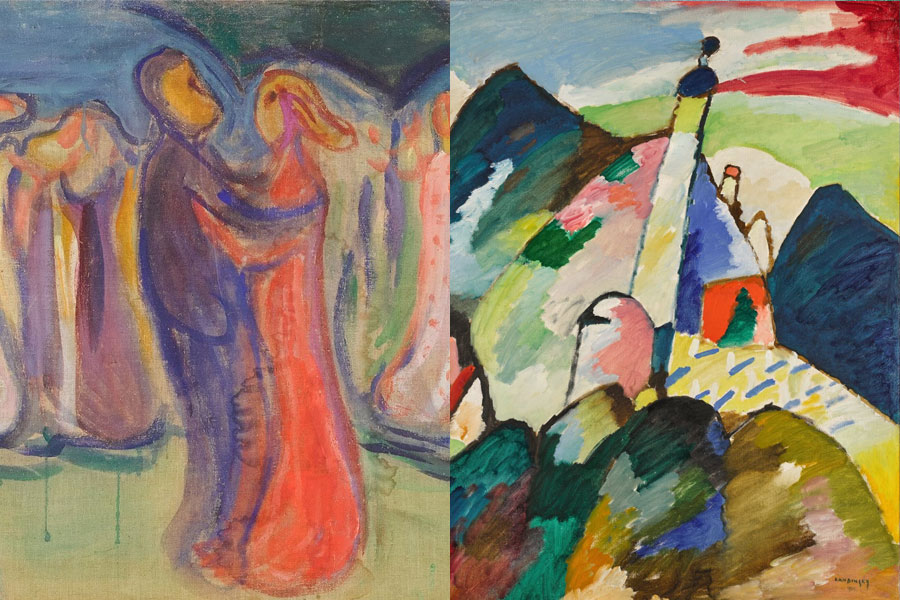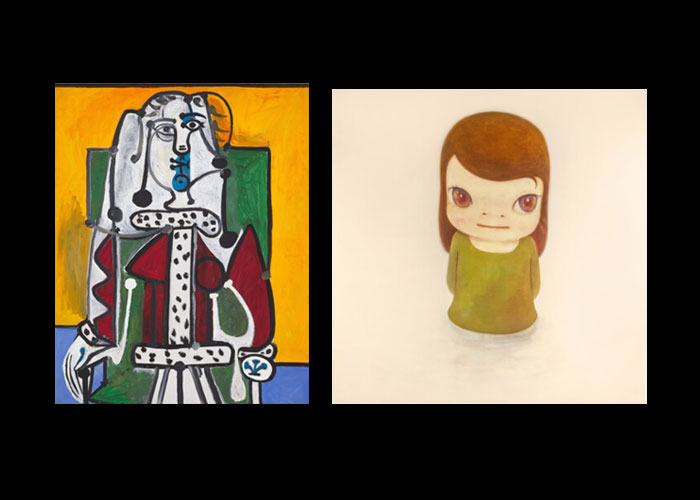The Vestal Virgin, the Virgin Mother and 7,000 years of art at TEFAF
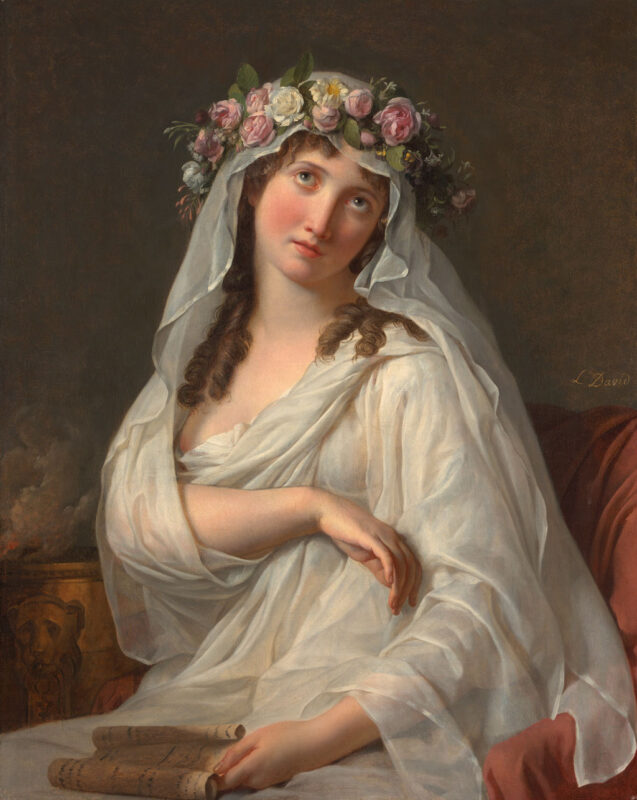
A look at some of the most interesting works on display at the 36th edition of TEFAF Maastricht, the colossal art fair taking place from 11 to 19 March 2023.
By G. Fernández · theartwolf.com · Sources: TEFAF / Wildenstein / Colnaghi / Didier Aaron / Alon Zakaim Fine Art
Image: Jacques-Louis David, “Vestal” (or “A Vestal”), 1788-90. On display at Wildenstein.
Unlike other art fairs, which focus almost exclusively on contemporary art, TEFAF exhibits a wide selection of Old Masters paintings. Among the works that Wildenstein has announced for the fair, the gallery highlights a 16th century French tapestry, possibly commissioned for the Château d’Anet by Diane de Poitiers. But on a personal note, the one I find most interesting is Jacques-Louis David’s “A Vestal“, a painting that came up for auction some seven years ago at Christie’s, with a pre-sale valuation of between $3 million and $5 million, previously forming part of the catalogues of the Stair Sainty Matthiesen and Wildenstein galleries . Curiously, Stair Sainty Matthiesen had a certain prominence at TEFAF in 2007 when it offered “The Anger of Achilles“, which the gallery considered to be a second version of the famous painting by Jacques Louis David, now in the Kimbell Museum, for some $12 million, although the attribution of this version to the great genius of neoclassical painting is debated by some experts.
One point I find intriguing about “A Vestal” is its date of execution. On its website, Wildenstein places it chronologically around 1788-1790, a key period in the artist’s career, when the successful and academic David, at the height of the Parisian art scene thanks to the monumental and epic “The Oath of the Horatii” (1784) or “The Death of Socrates” (1787) was caught up in the political, social and also artistic turmoil provoked by the French Revolution. However, other sources date it to between 1783 and 1787, and prior to the 2016 auction, Christie’s defined it as “the last pre-Revolutionary history painting by the artist in private hands, a period during which David galvanized and transformed European art with the creation of world-famous images.” Given its subject matter, it seems more logical to me (with the caution that all of us who are not experts on Jacques-Louis David’s career should have) to place it in the first half of the 1780s, shortly after his return from Italy, where the painter had contact with the works of antiquity, including visits to the ruins of Pompeii and Herculaneum. Moreover, the pose of the Vestal is somewhat reminiscent of that of Andromache in the celebrated “Andromache Mourning Hector” (Paris, Louvre), painted in 1783.
In 2016, Christie’s also stated that “the impetus for Jacques-Louis David to create this painting of A Vestal is unknown, and there is no record of its having been commissioned“. I am sorry I cannot provide concise information on this point, but I find it interesting to share a reflection written by Eugenio Carmona in his biography of Jacques-Louis David (1993), which perhaps helps to understand the genesis of works such as “A Vestal“: “David always believed in the primacy of personal talent. He also believed, and firmly believed, that talent should be recognised by the established powers and dominant social groups. David wanted to change the world he lived in to make it better, as he believed it should be. At the same time, however, David always aspired to enjoy an unbeatable economic position, the highest administrative rank that could be granted to a painter, and the greatest possible public recognition. In short, the social class to which David belongs is the bourgeoisie and no other”. (Eugenio Carmona, “Jacques-Louis David”, 1993)
Although its attribution was debated in the past, “A Vestal” is a work of undeniable beauty, painted by the great genius of neoclassical painting, whose works are not very frequent on the market. Since “A Vestal” appeared at Christie’s auction, only “The Distribution of the Eagle Standards“, a study for the monumental painting now in Versailles, has come on the market, being auctioned for $2.5 million in May 2019. I do not know the price Wildenstein is asking for this painting, but taking Christie’s 2016 estimate as a guide, my advice to collectors is very clear: go for it.
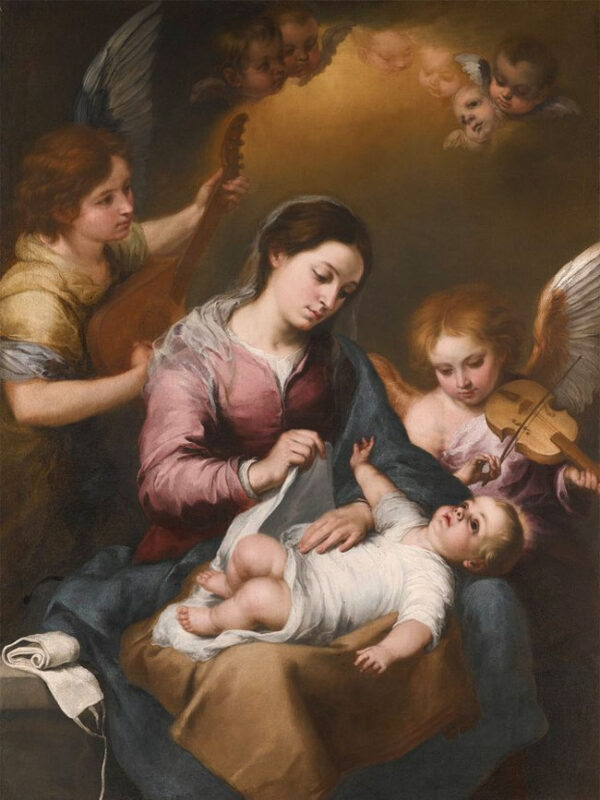
Image: Bartolomé Esteban Murillo, “La Virgen de la Faja” (The Virgin of the Swaddling Cloth) (c.1660). On display at Colnaghi.
Another of the big stars in the Old Masters section is on display at the stand of Colnaghi, another of the most famous galleries in this field. This is “La Virgen de la Faja” by Bartolomé Esteban Murillo (1617-1682), which returns to Colnaghi after 170 years, since -as the gallery points out- they acquired it from Christie’s in 1873. This does not mean, of course, that the work has been kept away from the art market during all this time, and in fact in the last twenty years it has passed through a Spanish private collection and a Swiss private collection.
Colnaghi defines this “The Virgin of the Swaddling Cloth” as “one of the artist’s last masterpieces in private hands“. This phrase is often read or heard at fairs and auctions, and is usually an exaggeration or hyperbole (if not outright a lie), but in this case it is fair and accurate. It is certainly an excellent and important Murillo, with a good provenance that includes the royal collection of King Louis-Philippe of Orleans, and widely studied, commented on, and copied by followers and imitators. Alicia Cámara (“Bartolomé Esteban Murillo“, 1993) notes that “In the ‘Virgen de la Faja’ (…) it is a mother swaddling her child that we see while angels attend the scene. It soon became a very popular work, no doubt due to the naturalness with which the subject is treated, since, if we leave out the angels, we are looking at a scene from everyday life, in which a mother changes her child’s nappies“.
In addition, De Jonckheere offers a “Panoramic landscape with port city, Samson fighting a lion in the foreground” by Hans Bol (1534-1593), a very fine landscape which in its minuteness and attention to detail is reminiscent of a miniature from an illuminated manuscript, but which measures 52 x 66.7 cm. The work was exhibited at Fine Arts Paris in November last year, where, according to some sources, it was priced at 750,000 euros. Galerie Canesso exhibits a small “Saint Jerome” by Guido Reni (1575-1642) and a very fine “Christ Disrobed by his Tormentors” by Luca Cambiaso (1527-1585). Didier Aaron offers a monumental “Mystical Marriage of Saint Catherine of Alexandria” by the Caravaggist Giuseppe Vermiglio (1585-1635), which was auctioned two years ago in Paris for 211,200 euros. Trinity Fine Art includes a “Portrait of a Scholar” by Tintoretto (1518-1594), one of the great names in Venetian painting.
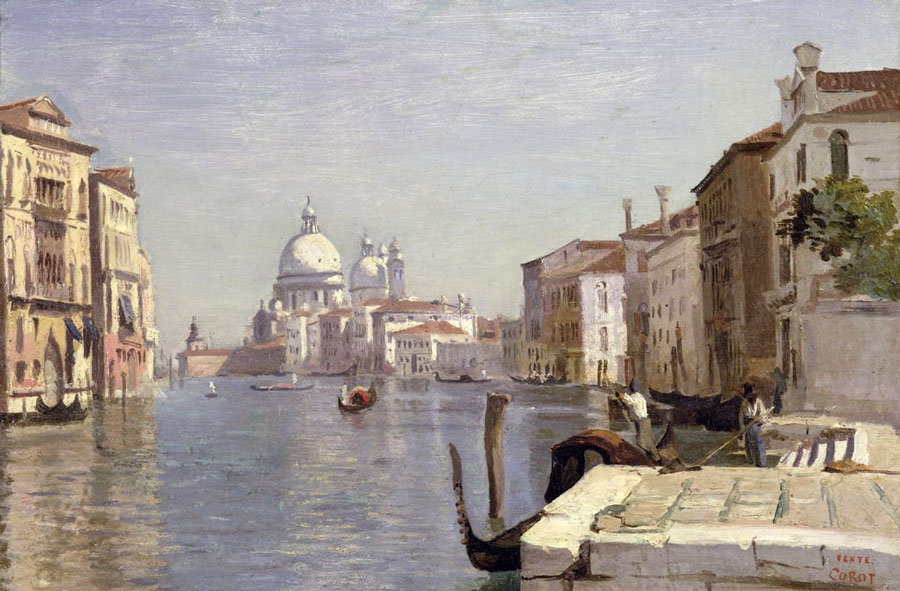
Image: “Venise – Vue du Campo della Carita en regardant le dôme de la salute” (1834) by Jean-Baptiste-Camille Corot. On display at Gallery 19C
Within 19th century art, Gallery 19C exhibits “Venise – Vue du Campo della Carita en regardant le dôme de la salute” (1834) by Jean-Baptiste-Camille Corot. It is a small (26.7 x 38.1 cm) oil on paper mounted on canvas, with an almost Impressionist look, which Sotheby’s brought to auction in 2014 with an estimated price of between $1 million and $1.5 million, but without finding a buyer. More recently, five years ago, Christie’s achieved a new record price for the artist with the sale of another Venetian view (“Venise, vue du Quai des Esclavons“, 1845) for around $9 million.
Among the selection of Impressionist and modern art works, Alon Zakaim Fine Art is showing a curious selection of works, including Camille Pissarro‘s “Route enneigée avec maison, environs d’Eragny” (1885), which Sotheby’s auctioned some 4 years ago for $711,000, two late landscapes by Pierre-Auguste Renoir (a “Paysage” offered for 400,000 euros, and “Paysage, la maison vue de la ferme” from 1915), and a beautiful and evocative “Danseuse assise” (c.1952 ) by Kees van Dongen, which is offered for $345,000, a price that seems very reasonable to me despite the fact that the work failed to find a buyer last year at Christie’s. Among the works exhibited by Thomas Gibson Fine Art is “Femme au tablier“, an oil on paper painted in 1949 by Pablo Picasso, which was auctioned almost four years ago at Sotheby’s for just over £1 million.
Willoughby Gerrish exhibits a small “Family Group” (1945) by sculptor Henry Moore (1898-1986), identical (or perhaps the same?) to the one auctioned for $667,500 at Christie’s New York in May 2017 (a month later, a larger version was sold at Christie’s London for £3.86 million). The aforementioned Thomas Gibson Fine Art offers “Buste d’Annette IV” (1962), a bronze by Alberto Giacometti. Another version of this work was sold nine years ago at Sotheby’s for $3.4 million.
Among the ancient works of art, David Aaron offers a small Egyptian sculpture representing a baboon, created during the 19th dynasty (around 1200 BC). The piece was already in the collection of Giovanni Dattari (1853-1923) around 1912, which makes its provenance less worrying. This small sculpture, by the way, was offered by Christie’s London in December 2019, with a pre-sale estimate of between £150,000 and £250,000. One of the most interesting pieces is a small sculpture of a ‘princess’, created in Bactria around 2,200-1,900 BC, which is on display on the Galerie Kevorkian stand. A comparable figure, albeit in a much worse state of preservation, was auctioned for $31,250 (more than 3 times its most optimistic pre-sale estimate) two years ago at Christie’s, while another figure slightly larger in size fetched $182,500 in December 2010. As with all antiquities, details of provenance are essential to establish an appropriate valuation. In the Asian art section, Rossi & Rossi includes an important selection of Himalayan sculptures from the collection of Leonidas Goulandris.
Follow us on:

